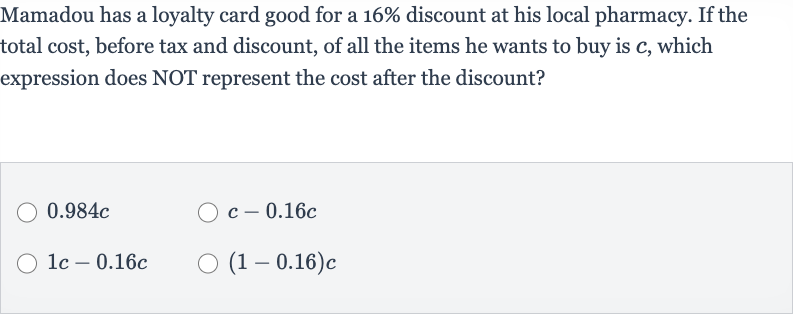Full solution
Q. Mamadou has a loyalty card good for a discount at his local pharmacy. If the total cost, before tax and discount, of all the items he wants to buy is , which expression does NOT represent the cost after the discount?
- Understand Discount Calculation: First, let's understand what a discount means in terms of an expression. A discount off the total cost means we are subtracting of from itself.
- Calculate % of Total Cost: To calculate % of , we multiply by .Calculation:
- Subtract Discount from Total Cost: Now, let's subtract this value from the original cost to find the cost after the discount.Calculation:
- Simplify Expression: We can simplify the expression by factoring out .Calculation:
- Examine Given Expressions: The simplified expression for the cost after the discount is or .
- Compare Expressions to : Now let's examine the given expressions to see which one does NOT represent the cost after the discount:. . . . We know that the correct expression should be equivalent to .
- Compare Expressions to : Now let's examine the given expressions to see which one does NOT represent the cost after the discount:. . . . We know that the correct expression should be equivalent to .Let's compare each expression to :. is equivalent to , which is not the same as .. simplifies to , which is .. simplifies to , which is .. simplifies to , which is .The expression that does NOT represent the cost after the discount is .
More problems from Multi-step problems with percents
QuestionGet tutor help
QuestionGet tutor help
QuestionGet tutor help
QuestionGet tutor help
QuestionGet tutor help

